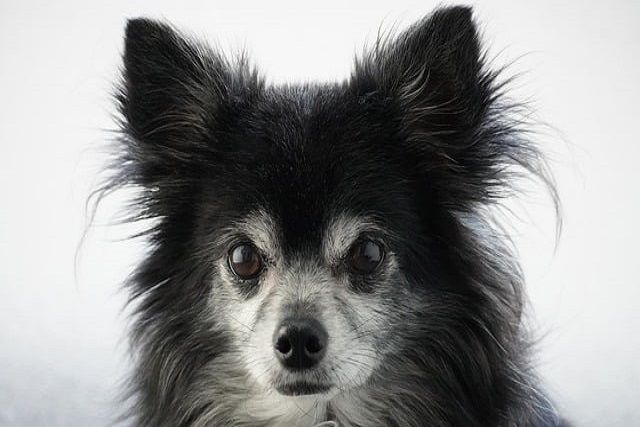
How can I tell if my dog's heatstroke is serious
Let’s be real: It’s a sticky August morning in Los Angeles, and you took your 2-year-old Golden Retriever, Max, for a walk a little later than usual
You know the scene: you walk through the door after work, arms full of groceries. Your two dogs, maybe Buddy the Golden and Daisy the Beagle, erupt into a whirlwind of happy barks and wiggles. It’s pure joy... until suddenly, the playful bouncing turns stiff. Buddy body-slams Daisy near the couch, Daisy snaps back with a snarl, and your heart sinks. Why does excitement flip a switch into fighting? This isn't malice; it's over-arousal aggression, where big feelings overload their ability to cope, turning that happy energy into conflict.
Think of it like a pressure cooker. Excitement – the doorbell ringing, you grabbing the leash, kids running in the yard – floods your dog's system with adrenaline. For some dogs, especially those lacking impulse control or with a history of resource tension, this intense arousal has nowhere safe to go. They might redirect that frenzied energy onto the nearest target: their canine housemate. Buddy isn't "attacking" Daisy out of hatred; his overwhelmed brain, buzzing with noise and movement, sees her sudden movement as a trigger in that chaotic moment. Signs like stiffening, intense staring, raised hackles, or a high-pitched bark signal they're tipping over their threshold before the snap happens.
Stopping this cycle focuses on prevention, management, and teaching calm. Crucially, yelling "No!" or trying to physically pull them apart mid-fight is dangerous and counterproductive. Punishment only adds more stress and violates the positive reinforcement ethos central to modern US/EU animal welfare. Instead, become a master of anticipation. Learn their triggers (your arrival? playtime starting?) and intervene before arousal peaks. The moment you see signs of escalating excitement (excessive barking, rough play intensifying), calmly separate them before conflict starts. Use baby gates or send each dog to their crate or mat with a high-value chew without fuss. Create physical space to let the pressure drop. Simultaneously, teach an incompatible behavior like "Go to Mat" during calm moments. Reward them heavily for settling down before the chaos hits. When high-energy events happen (like guests arriving), keep dogs separated initially. Let them decompress separately with a frozen Kong, then reintroduce calmly once the initial frenzy has passed.

Living in an apartment? Sudden dog fights aren't just scary; the noise can seriously disrupt neighbors and violate noise ordinances. Always have multiple leashes and biodegradable bags ready for walks (mandatory in cities like Boston or Austin – forget them, face fines!). Ensure both dogs' rabies vaccinations and licenses are current; if a scuffle leads to an accidental nip during vet checks, proof of vaccination is legally essential. During walks in shared community spaces, maintain distance between your own dogs if they get leash-frustrated easily. Avoid letting them greet other dogs together while overly excited – this is prime setup for redirected tension. If a spat happens in a public area, quickly and calmly separate them, apologize to anyone nearby ("Working on their manners!"), and move on. Remember, letting dogs "work it out" during high arousal often escalates; responsible management prevents incidents.
Patience and consistency are key. Celebrate moments they remain calm during known triggers! If fights are frequent or intense, consult a certified force-free trainer or vet behaviorist. They can rule out underlying pain (making a dog more irritable) and design a tailored plan addressing resource guarding or impulse control specifically for your multi-dog household. With smart management, teaching alternative calm behaviors, and understanding their arousal limits, you can transform those tense homecomings back into safe, happy reunions for your entire furry family.

Let’s be real: It’s a sticky August morning in Los Angeles, and you took your 2-year-old Golden Retriever, Max, for a walk a little later than usual

You're enjoying a summer afternoon at the park when you notice your dog has stopped panting and appears disoriented - their gums are bright red

Let’s paint the picture: You’re in your Denver apartment, watching your 4-year-old Boston Terrier, Ruby, plop down mid-play session with her favorite toy

Many dog owners notice their pets nails seem shorter after regular walks,but how much does this daily activity actually help?The answer depends on where you walk—concrete sidewalks or asphalt streets gently file nails as a dog's paws hit the ground

Most dog owners notice their pup scooting across the carpet at some point, but few connect it to impacted anal glands. These small sacs near a dog’s rectum secrete a scent for marking territory

Most vets agree that regular dog teeth cleaning is key to avoiding painful dental issues later. For healthy adult dogs, a professional cleaning at the vet’s office every 12 to 18 months usually works well.